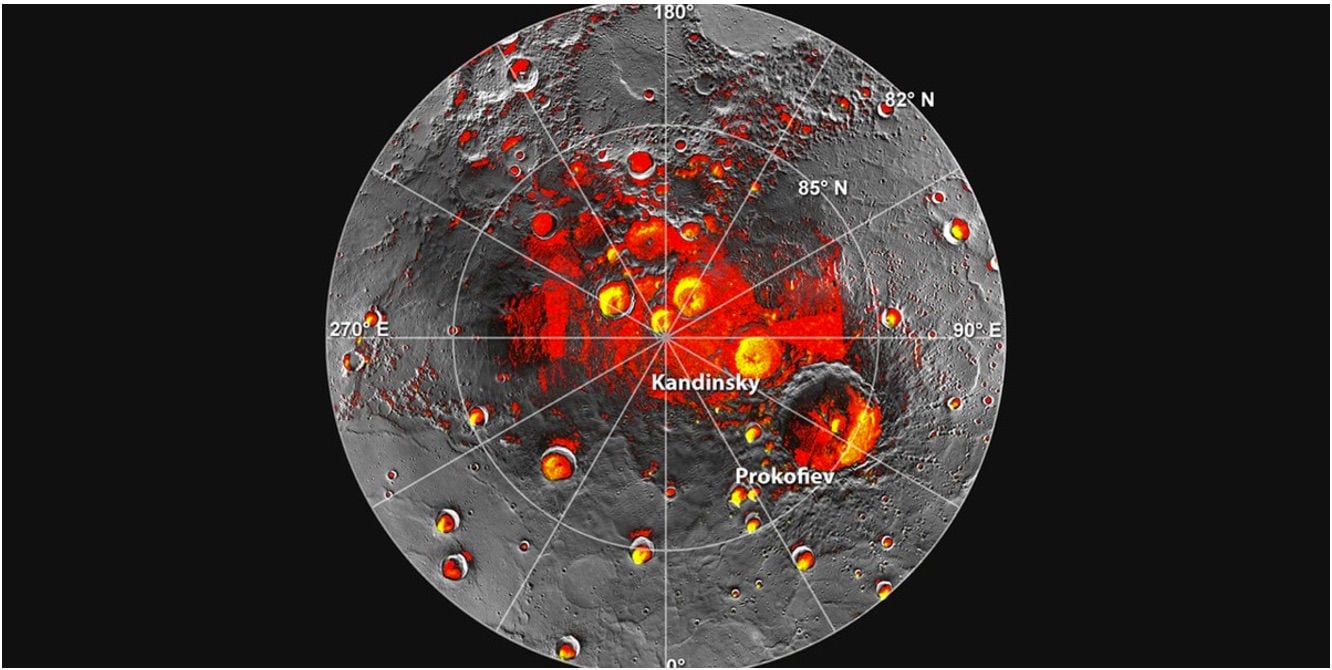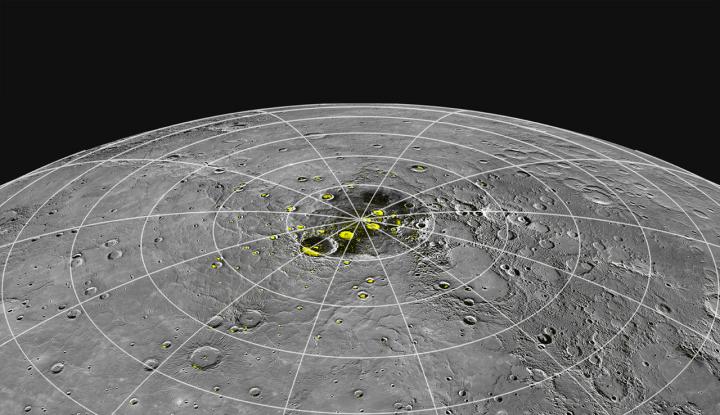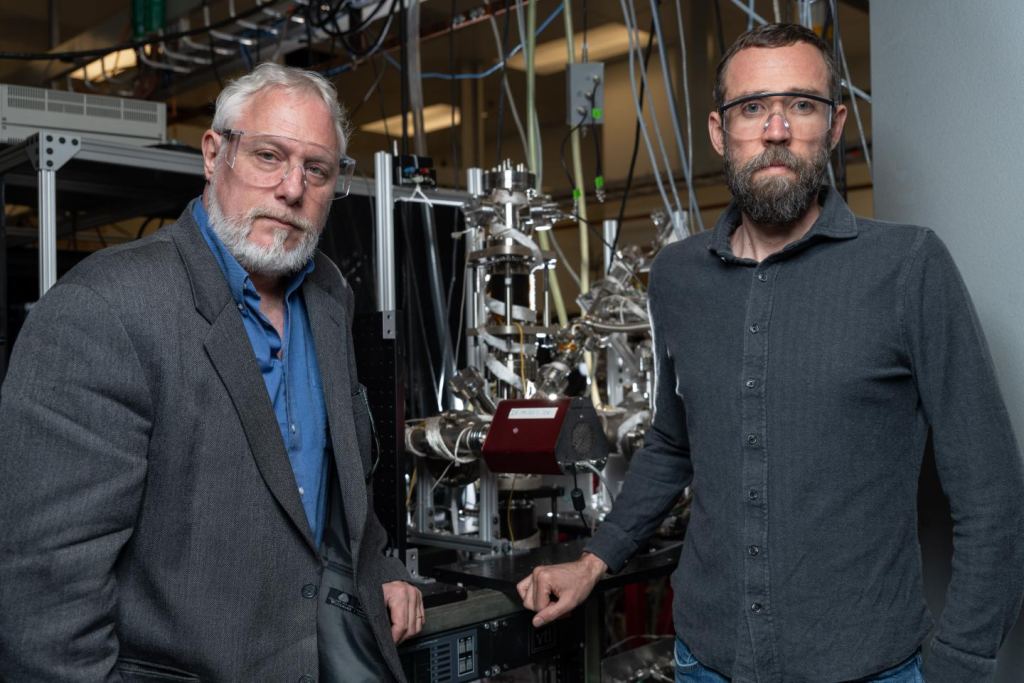While the scorching planet Mercury might not be the first place you'd think to look for ice, the MESSENGER mission confirmed in 2012 that the planet closest to the Sun does indeed hold water ice in the permanently-shadowed craters around its poles. But now a new study regarding Mercury's ice provides even more counter-intuitive details about how this ice is formed. Scientists say heat likely helps create some of the ice.
Brant Jones, a researcher in Georgia Tech's School of Chemistry and Biochemistry and the study's first author, said this isn't some strange, crazy idea. While it's a bit complicated, it's mostly just basic chemistry.
The planet's extreme daytime heat combined with the super-cold (minus 200-degree Celsius) temperatures in the permanently shadowed craters might be acting like an "ice-making chemistry lab."
"There is a surprising amount of ice on Mercury and significantly more than on the Moon," Brant told Universe Today.
The process for creating ice on Mercury is similar to what happens on the Moon. Back in 2009, scientists determined electrically charged particles from the Sun's solar wind were interacting with the oxygen present in some dust grains on the lunar surface to produce hydroxyl. Hydroxyl (OH) is just one atom of hydrogen with an oxygen atom, instead of the two hydrogen atoms found in water.
Brant worked with other scientists, including colleague Thomas Orlando, also from Georgia Tech, to refine the understanding of that process. In 2018, they published a paper that showed that while this process on the Moon produced significant amounts of hydroxyls, it produced very little molecular water.
"Though the solar wind was suggested as a potential source term in the 2009 observations of water on the Moon," Orlando said via email, "the mechanisms were never really identified. We modeled this for the Moon but the importance was not as significant on the Moon due to the overall much lower temperatures."
But they knew this process could also take place on asteroids, Mercury or any other surface that is bombarded by the solar wind.
"In order to create molecular water, you need one more ingredient, and that is heat," said Brant.
Daytime temperatures on Mercury can reach 400 degrees Celsius, or 750 degrees Fahrenheit.
Minerals in Mercury's surface soil contain what are called hydroxyl groups. The extreme heat from the Sun helps to free up these hydroxyl groups then energizes them to smash into each other to produce water molecules and hydrogen that lift off from the surface and drift around the planet.
Some water molecules are broken down by sunlight and dissipate. But other molecules land near Mercury's poles in deep, dark craters that are shielded from the Sun. The molecules get trapped there and become a part of the growing, permanent glacial ice housed in the shadows.
"It's a little like the song Hotel California. The water molecules can check in to the shadows but they can never leave," said Orlando in a press release.
"The total amount that we postulate that would become ice is 1013 kilograms (10,000,000,000,000 kg or 11,023,110,000 tons) over a period of about 3 million years," Jones said. "The process could easily account for up to 10 percent of Mercury's total ice."
The data used for their study comes from the MESSENGER spacecraft, which orbited Mercury between 2011 and 2015, studying the planet's chemical composition, geology, and magnetic field. MESSENGER’s findings of polar ice corroborated previous signatures for ice picked up years earlier by Earth-based radar.
 Universe Today
Universe Today


